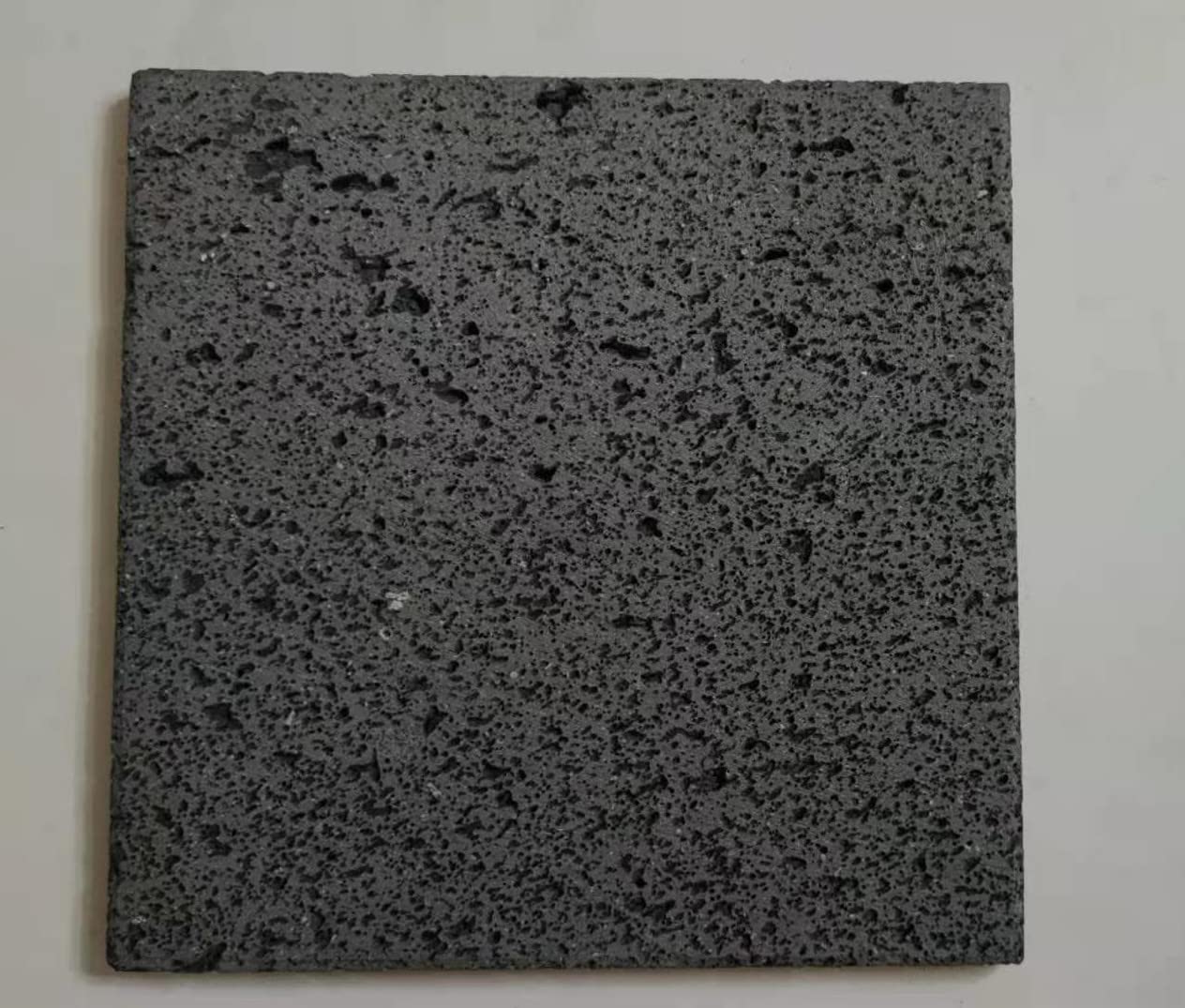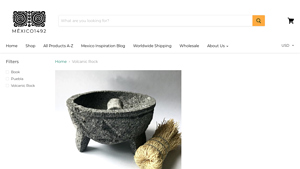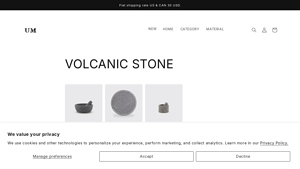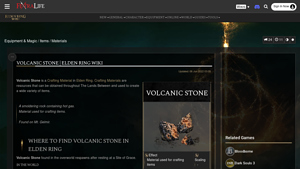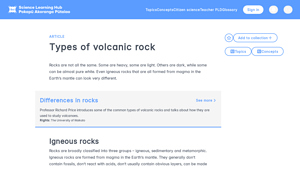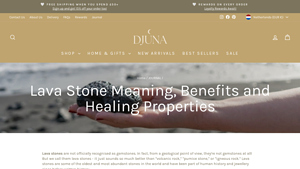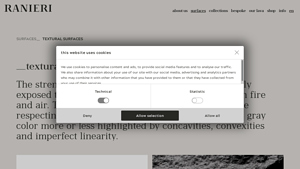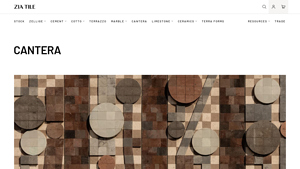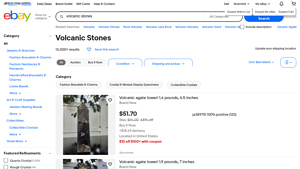Volcanic Stone Guide: Type,Cost,Material…
Introduction: Navigating the Global Market for volcanic stone
In the competitive landscape of international trade, sourcing volcanic stone presents both opportunities and challenges for B2B buyers. As businesses look to harness the unique properties of this versatile material—ranging from its applications in construction and landscaping to its culinary uses in traditional cookware—understanding the nuances of the global market becomes essential. This guide serves as a comprehensive resource for navigating the complexities of volcanic stone procurement, addressing key considerations such as the different types available, their diverse applications, and the critical aspects of supplier vetting.
International buyers, particularly those from Africa, South America, the Middle East, and Europe—including regions like Saudi Arabia and Vietnam—will benefit from actionable insights into cost structures and quality standards. The guide empowers decision-makers by providing detailed information on sourcing strategies, ensuring that they can make informed choices that align with their business needs.
By exploring the rich history and unique characteristics of volcanic stone, along with best practices for procurement, this guide equips B2B buyers with the knowledge necessary to confidently engage with suppliers and optimize their purchasing processes. Whether you’re looking to enhance your product offerings or invest in durable materials, understanding the volcanic stone market is a vital step toward achieving your business objectives.
Understanding volcanic stone Types and Variations
| Type Name | Key Distinguishing Features | Primary B2B Applications | Brief Pros & Cons for Buyers |
|---|---|---|---|
| Basalt | Dense, fine-grained, typically dark-colored | Construction, road building, stone carvings | Pros: Durable, versatile; Cons: Heavy, less porous than other types |
| Pumice | Light, highly porous, often floats on water | Lightweight aggregates, landscaping | Pros: Lightweight, good insulation; Cons: Fragile, less suitable for structural use |
| Scoria | Rough texture with numerous air pockets, red to black | Drainage systems, landscaping, filtration | Pros: Good drainage, aesthetic appeal; Cons: Can be abrasive, variable quality |
| Tuff | Composed of volcanic ash, softer and lighter | Lightweight concrete, decorative stones | Pros: Easy to work with, good thermal properties; Cons: Less durable than basalt |
| Lava Stone | Textured, porous, retains heat well | Cookware, decorative items, jewelry | Pros: Unique appearance, excellent heat retention; Cons: Requires careful maintenance |
What Are the Characteristics of Basalt Volcanic Stone?
Basalt is a dense, fine-grained volcanic stone, typically dark in color, formed from rapidly cooled lava. This stone is prized for its durability and is commonly used in construction and road building, as well as for stone carvings. When purchasing basalt, buyers should consider its weight and density, which may impact transportation costs. Its low porosity makes it less suitable for applications requiring high water retention, but its strength makes it ideal for structural uses.
How Does Pumice Differ from Other Volcanic Stones?
Pumice is characterized by its light weight and high porosity, resulting from gas bubbles trapped during the rapid cooling of lava. It is commonly used as a lightweight aggregate in construction and for landscaping purposes. B2B buyers should note that while pumice is excellent for insulation and drainage, it is also relatively fragile, which may limit its use in high-stress applications. Proper handling and storage are crucial to prevent damage.
What Are the Unique Features of Scoria?
Scoria is recognized for its rough texture and numerous air pockets, giving it a distinctive appearance ranging from red to black. This volcanic stone is often used in drainage systems, landscaping, and filtration applications due to its excellent drainage properties. Buyers should be aware that scoria can be abrasive and its quality can vary significantly, making it essential to source from reputable suppliers to ensure consistency.
Why Choose Tuff for Your Projects?
Tuff is a softer volcanic stone made from compacted volcanic ash. Its lightweight nature makes it an excellent choice for lightweight concrete and decorative stone applications. B2B buyers should consider tuff’s thermal properties, which can provide insulation benefits. However, it is less durable than basalt, so it may not be suitable for high-load applications. Understanding the intended use is crucial when selecting tuff for construction projects.
What Makes Lava Stone Popular in B2B Markets?
Lava stone is known for its unique texture and excellent heat retention, making it popular for cookware and decorative items. This stone is also used in jewelry due to its distinctive appearance. Buyers should consider the maintenance required for lava stone products, as they may need special care to prevent damage. Its aesthetic appeal and functional properties make it a valuable material in various B2B applications, especially in culinary and decorative markets.
Key Industrial Applications of volcanic stone
| Industry/Sector | Specific Application of volcanic stone | Value/Benefit for the Business | Key Sourcing Considerations for this Application |
|---|---|---|---|
| Food & Beverage | Traditional kitchenware (molcajetes, metates) | Enhances flavor and aroma of food; cultural authenticity | Quality of craftsmanship, consistency in size and shape |
| Construction & Landscaping | Decorative aggregates and building materials | Eco-friendly, lightweight, enhances aesthetic appeal | Sourcing from sustainable quarries, ensuring compliance |
| Spa & Wellness | Natural massage stones and aromatherapy tools | Promotes relaxation and wellness; unique product offering | Authenticity of volcanic origin, safety standards compliance |
| Fashion & Jewelry | Beads and accessories made from volcanic stone | Unique aesthetic appeal; lightweight yet durable | Sourcing from reputable artisans, ensuring fair trade practices |
| Agriculture | Soil amendment and drainage solutions | Improves soil structure and aeration; enhances crop yield | Analysis of mineral content, local sourcing availability |
How is Volcanic Stone Utilized in the Food & Beverage Industry?
Volcanic stone has a long-standing tradition in the food and beverage sector, particularly in the form of kitchenware like molcajetes (mortars) and metates (grinding stones). These tools are integral to traditional cooking, especially in Latin American cuisines, where they enhance the flavor and aroma of ingredients. For B2B buyers, sourcing high-quality volcanic stone kitchenware requires attention to craftsmanship, ensuring that the products maintain their functional and aesthetic integrity. Buyers should also consider the availability of various sizes and shapes to cater to diverse culinary needs.
What Role Does Volcanic Stone Play in Construction & Landscaping?
In construction and landscaping, volcanic stone serves as a decorative aggregate and a lightweight building material. Its unique appearance and eco-friendly nature make it an attractive option for architects and landscape designers looking to create visually appealing and sustainable structures. When sourcing volcanic stone for these applications, businesses should focus on sustainability practices of the quarries, ensuring that the extraction processes comply with environmental regulations. Consistency in size and color is also crucial to meet design specifications.
How is Volcanic Stone Beneficial in Spa & Wellness Applications?
Volcanic stone is increasingly popular in the spa and wellness industry for its use in massage therapy and aromatherapy. The stones retain heat effectively, providing soothing warmth during treatments, which enhances relaxation and therapeutic benefits. For international B2B buyers, verifying the authenticity of the volcanic origin is essential, as is ensuring that the stones meet safety standards for skin contact. Additionally, sourcing from reputable suppliers can guarantee quality and ethical practices.
Why is Volcanic Stone Sought After in Fashion & Jewelry?
In the fashion and jewelry sector, volcanic stone is prized for its unique texture and lightweight properties. Artisans craft beads and accessories that appeal to consumers looking for distinctive and sustainable fashion items. B2B buyers need to prioritize sourcing from reputable artisans who adhere to fair trade practices, ensuring that the products are not only stylish but also ethically produced. Understanding the supply chain and the authenticity of the volcanic stone is vital for maintaining brand integrity.
How Does Volcanic Stone Enhance Agricultural Practices?
Agriculturally, volcanic stone can be used as a soil amendment to improve drainage and aeration. Its mineral composition contributes to enhanced soil structure, leading to better crop yields. For B2B buyers in the agricultural sector, it is important to analyze the mineral content of the volcanic stone to ensure it meets specific agricultural needs. Additionally, sourcing locally can reduce transportation costs and support local economies, making it an attractive option for sustainable farming practices.
3 Common User Pain Points for ‘volcanic stone’ & Their Solutions
Scenario 1: Sourcing Quality Volcanic Stone for Authentic Culinary Uses
The Problem: B2B buyers in the culinary industry often struggle to find high-quality volcanic stone products that meet their specific requirements for traditional cooking. In regions such as Africa and the Middle East, where volcanic stone tools like molcajetes and metates are essential for authentic food preparation, buyers may encounter challenges with inconsistent quality, improper sourcing, or lack of artisanship in mass-produced items. This can lead to dissatisfaction among chefs and restaurateurs who value the unique flavors and textures that authentic volcanic stone provides.
The Solution: To ensure the procurement of quality volcanic stone, buyers should prioritize sourcing from reputable suppliers that specialize in artisanal products. Establish partnerships with local artisans or cooperatives in regions known for volcanic stone craftsmanship, such as Mexico. Conduct thorough quality checks by requesting samples and verifying the stone’s porosity and mineral content. Additionally, consider the specific culinary uses for which the stone will be employed, and communicate these needs clearly to suppliers. This approach not only guarantees a superior product but also supports local economies and preserves traditional craftsmanship.
Scenario 2: Maintenance Challenges with Volcanic Stone Tools
The Problem: Another common issue for buyers is the maintenance of volcanic stone kitchen tools. Improper care can lead to deterioration, such as cracking or odors from improper cleaning methods. This is particularly concerning for establishments that rely on these tools for daily operations, as any downtime can affect service quality and customer satisfaction.
The Solution: To mitigate maintenance issues, it is crucial to provide comprehensive care instructions to end-users. Buyers should include detailed guidelines with each purchase, outlining the proper cleaning methods—such as avoiding soap and detergents and recommending the use of hot water and brushes. Furthermore, suggest a regular seasoning process using rice and salt, which helps maintain the stone’s integrity and prevents flavor contamination. Establishing a maintenance schedule can also help users prolong the life of their volcanic stone tools. Offering workshops or online tutorials can further educate users on effective care practices, enhancing their overall experience and satisfaction.
Scenario 3: Adapting Volcanic Stone for Diverse Market Preferences
The Problem: As global markets expand, B2B buyers face the challenge of adapting volcanic stone products to meet diverse regional preferences and culinary trends. For instance, while traditional uses may focus on grinding spices in South America, there is growing interest in unique decorative items or health-oriented applications, such as volcanic stone cookware in Europe. Buyers may find it difficult to navigate these evolving consumer demands while ensuring the authenticity and quality of volcanic stone products.
The Solution: To effectively adapt to diverse market preferences, buyers should invest in market research to identify current trends and consumer interests across different regions. This can include attending culinary expos, engaging with chefs, and participating in industry forums. Buyers should collaborate with suppliers to develop product lines that cater to various uses, such as decorative items, cookware, or health-focused products, while maintaining the authenticity of volcanic stone. Creating a flexible inventory that allows for seasonal or trend-based variations can also help meet changing consumer demands. Additionally, highlighting the unique attributes of volcanic stone in marketing efforts can educate consumers and drive interest in these versatile products.
Strategic Material Selection Guide for volcanic stone
What Are the Key Properties of Volcanic Stone for B2B Applications?
Volcanic stone, often referred to as lava stone, is primarily characterized by its porous structure, which results from rapid cooling of magma. This unique property contributes to its lightweight nature and makes it an excellent thermal insulator, allowing it to withstand high temperatures without significant thermal expansion. Its composition, predominantly of aluminum, iron, magnesium, sodium, potassium, and calcium silicates, imparts a moderate hardness of 3 to 5 on the Mohs scale, making it suitable for various applications, including cookware and decorative items.
What Are the Pros and Cons of Using Volcanic Stone?
When considering volcanic stone for B2B applications, several advantages and disadvantages arise.
Pros:
1. Durability: Volcanic stone is resistant to wear and tear, making it suitable for long-term use in both culinary and decorative contexts.
2. Thermal Properties: Its excellent heat retention and distribution make it ideal for cooking applications, such as traditional molcajetes (mortars) used in Mexican cuisine.
3. Aesthetic Appeal: The natural appearance and unique textures of volcanic stone enhance the aesthetic value of products, appealing to consumers looking for artisanal or traditional items.
Cons:
1. Cost: The extraction and processing of volcanic stone can be more expensive than other materials, impacting the overall cost of finished products.
2. Manufacturing Complexity: The need for specialized tools and techniques to shape volcanic stone can complicate the manufacturing process, leading to longer lead times.
3. Maintenance Requirements: Products made from volcanic stone require specific care, such as avoiding soap during cleaning, which may deter some consumers.
How Does Volcanic Stone Impact Specific Applications?
The porosity of volcanic stone allows it to absorb flavors and aromas, enhancing the culinary experience. However, this characteristic necessitates careful selection of applications to prevent cross-contamination of flavors. For instance, a dedicated molcajete for salsas should not be used for grinding spices to maintain the integrity of flavors. Additionally, the material’s compatibility with high temperatures makes it suitable for use in ovens and on stovetops, though it is not microwave-safe.
What Should International B2B Buyers Consider When Sourcing Volcanic Stone?
International buyers, particularly from regions such as Africa, South America, the Middle East, and Europe, should be mindful of several factors when sourcing volcanic stone. Compliance with local and international standards, such as ASTM, DIN, or JIS, is crucial to ensure product safety and quality. Additionally, understanding regional preferences for specific volcanic stone products can enhance marketability. For example, Middle Eastern markets may favor traditional cooking tools, while European buyers might prioritize aesthetic elements for home decor.
Summary Table of Volcanic Stone Materials
| Material | Typical Use Case for volcanic stone | Key Advantage | Key Disadvantage/Limitation | Relative Cost (Low/Med/High) |
|---|---|---|---|---|
| Volcanic Rock | Cooking utensils (molcajetes) | Excellent heat retention and flavor absorption | Higher cost due to extraction and processing | High |
| Basalt | Decorative stone products | Aesthetic appeal and durability | Limited availability in some regions | Medium |
| Lava Stone | Outdoor cooking surfaces | Lightweight and portable | Requires careful maintenance | Medium |
| Porous Stone | Spa and wellness products | Natural thermal properties | Not microwave safe | Medium |
This guide provides a comprehensive overview of volcanic stone materials, focusing on their properties, advantages, disadvantages, and considerations for international B2B buyers. Understanding these factors can facilitate informed decision-making and successful sourcing strategies in diverse markets.
In-depth Look: Manufacturing Processes and Quality Assurance for volcanic stone
What Are the Main Stages in the Manufacturing Process of Volcanic Stone Products?
The manufacturing process of volcanic stone products typically involves several key stages, ensuring that the final products meet the expectations of quality and functionality. The main stages include material preparation, forming, assembly, and finishing.
-
Material Preparation: The first stage involves sourcing high-quality volcanic stone, which can be found in various regions globally, including Mexico, Italy, and Indonesia. The stone is extracted from quarries, where it undergoes initial sorting to eliminate impurities and unsuitable pieces. The selected stones are then cleaned and dried to remove any debris and moisture that could affect subsequent processing.
-
Forming: Once prepared, the volcanic stone is shaped into the desired product. This is often done through traditional handcrafting techniques, particularly for kitchenware such as molcajetes and metates. Artisans use chisels, hammers, and other tools to carve and shape the stone meticulously. For larger production runs, mechanical methods may be employed, but the focus remains on preserving the natural aesthetics of the volcanic rock.
-
Assembly: In some products, such as multifunctional kitchen tools, multiple components may need to be assembled. This process is typically straightforward for volcanic stone items, as they are often single-piece products. However, in cases where additional materials (like handles or bases) are involved, careful attention is paid to ensure that the assembly is secure and visually appealing.
-
Finishing: The final stage of manufacturing involves surface treatment and quality checks. Artisans polish the stone to enhance its appearance and functionality. This step may also include the application of food-safe sealants or finishes to improve durability and ease of cleaning. The finished products are then inspected for defects and prepared for packaging.
How Is Quality Assurance Implemented in Volcanic Stone Manufacturing?
Quality assurance in the manufacturing of volcanic stone products is critical to ensure that they meet international standards and customer expectations. The quality assurance process typically follows several key international standards, including ISO 9001, which outlines a framework for quality management systems.
What International Standards Should B2B Buyers Be Aware Of?
-
ISO 9001: This standard focuses on ensuring consistent quality in products and services. Manufacturers of volcanic stone products should have a quality management system (QMS) in place that aligns with ISO 9001 to demonstrate their commitment to quality.
-
CE Marking: For products sold in the European Economic Area, CE marking indicates conformity with health, safety, and environmental protection standards. B2B buyers should verify that their suppliers comply with CE requirements, particularly for kitchenware.
-
API Standards: For volcanic stone products used in industrial applications, such as construction or oil extraction, compliance with API (American Petroleum Institute) standards may be necessary. Buyers should confirm that their suppliers adhere to relevant API specifications.
What Are the Key Quality Control Checkpoints in Volcanic Stone Manufacturing?
Quality control (QC) checkpoints are integral to the manufacturing process, ensuring that products meet the required specifications at various stages.
-
Incoming Quality Control (IQC): This initial checkpoint involves inspecting the raw volcanic stone upon arrival at the manufacturing facility. Suppliers should assess the quality of the stone for any cracks, impurities, or inconsistencies that could affect the final product.
-
In-Process Quality Control (IPQC): Throughout the manufacturing stages, ongoing inspections are conducted to monitor adherence to quality standards. This includes checking the dimensions, weight, and surface finish of the products during shaping and finishing.
-
Final Quality Control (FQC): Once manufacturing is complete, a final inspection is performed to ensure that the products meet all specifications and standards. This includes testing for durability, porosity, and any other relevant performance metrics.
What Common Testing Methods Are Used for Volcanic Stone Products?
Manufacturers employ various testing methods to validate the quality and performance of volcanic stone products. Common methods include:
- Porosity Testing: Determines the density and porosity of the stone, which is crucial for applications like kitchenware where moisture absorption can impact usability.
- Hardness Testing: Assesses the hardness of the volcanic stone, typically using the Mohs scale, to ensure it meets industry standards for durability.
- Chemical Resistance Testing: Evaluates how well the stone withstands exposure to various chemicals, particularly for kitchen applications.
How Can B2B Buyers Verify Supplier Quality Control?
To ensure they are sourcing high-quality volcanic stone products, B2B buyers should implement several verification strategies:
-
Supplier Audits: Conduct regular audits of potential suppliers to assess their manufacturing processes and quality control measures. This can include site visits to observe production practices and quality checks firsthand.
-
Quality Reports: Request detailed quality assurance reports from suppliers, outlining their compliance with international standards and the results of any testing conducted on their products.
-
Third-Party Inspections: Engage third-party inspection services to evaluate the quality of volcanic stone products before shipment. This independent verification can provide an additional layer of assurance.
What Are the QC and Certification Nuances for International B2B Buyers?
International buyers, especially from regions like Africa, South America, the Middle East, and Europe, must navigate specific nuances when it comes to quality control and certification:
-
Regulatory Compliance: Different countries have varying regulatory requirements for product safety and quality. B2B buyers should familiarize themselves with the local regulations that apply to volcanic stone products in their target markets.
-
Cultural Considerations: Understanding cultural preferences and expectations around product quality can inform purchasing decisions. For instance, buyers in Europe may prioritize eco-friendly manufacturing practices, while those in the Middle East may focus on durability and aesthetics.
-
Language Barriers: Language differences can complicate communication regarding quality standards. It is essential for buyers to ensure that they can effectively communicate their quality requirements to suppliers, possibly involving translators or bilingual representatives.
By understanding the manufacturing processes, quality assurance standards, and verification strategies, B2B buyers can make informed decisions when sourcing volcanic stone products, ensuring that they receive high-quality materials that meet their specific needs.
Practical Sourcing Guide: A Step-by-Step Checklist for ‘volcanic stone’
In this guide, we will outline a practical checklist for B2B buyers looking to procure volcanic stone. This unique material, known for its durability and rich flavor-enhancing properties, is used in various applications, from kitchen tools to decorative items. Following these steps will help you make informed sourcing decisions that align with your business needs.
Step 1: Define Your Technical Specifications
Begin by outlining the specific characteristics you require from volcanic stone. This includes determining its size, porosity, color, and intended use (e.g., kitchen tools, construction materials, or decorative items). Clearly defined specifications will help streamline the sourcing process and ensure you receive products that meet your quality standards.
Step 2: Research Potential Suppliers
Conduct thorough research to identify potential suppliers who specialize in volcanic stone. Utilize online directories, trade shows, and industry forums to compile a list of candidates. Prioritize suppliers with a strong reputation and positive reviews from other businesses, particularly those in your target market regions such as Africa, South America, the Middle East, and Europe.
Step 3: Evaluate Supplier Certifications
Verify the certifications and quality standards of potential suppliers. Look for certifications such as ISO 9001 for quality management systems or specific industry-related accreditations. This step is crucial as it ensures that the supplier adheres to recognized quality standards, which can significantly affect the performance and reliability of the volcanic stone products.
Step 4: Request Product Samples
Before making a bulk purchase, request samples of the volcanic stone. Assess the quality, texture, and color of the samples to ensure they meet your specifications. Pay attention to the stone’s porosity and weight, as these factors can influence its functionality, especially in kitchen applications where aroma retention is important.
Step 5: Review Pricing and Payment Terms
Once you’ve narrowed down your options, compare pricing among the shortlisted suppliers. While cost is an essential factor, consider the overall value, including shipping costs and payment terms. Negotiating favorable payment terms can help manage your cash flow and reduce financial risk.
Step 6: Understand Shipping and Import Regulations
Familiarize yourself with the shipping and import regulations relevant to volcanic stone in your region. Different countries may have specific regulations regarding the import of natural stones, including customs duties and environmental restrictions. Ensuring compliance with these regulations will help avoid unexpected delays or costs.
Step 7: Establish Clear Communication Channels
Once you select a supplier, establish clear communication channels for ongoing support and inquiries. Regular updates on order status, product availability, and changes in pricing or specifications are essential for maintaining a smooth supply chain. A responsive supplier can significantly enhance your operational efficiency.
By following this step-by-step checklist, B2B buyers can effectively navigate the complexities of sourcing volcanic stone, ensuring they select the right materials from reliable suppliers while optimizing their procurement processes.
Comprehensive Cost and Pricing Analysis for volcanic stone Sourcing
What Are the Key Cost Components in Volcanic Stone Sourcing?
Understanding the cost structure for volcanic stone sourcing is crucial for international B2B buyers. The primary cost components include:
-
Materials: The type and quality of volcanic stone significantly impact the price. Stones sourced from specific regions known for their unique properties or aesthetic appeal may command higher prices.
-
Labor: Artisan craftsmanship plays a vital role in the production of volcanic stone products, especially for traditional items like molcajetes and metates. Labor costs can vary based on the skill level required and regional wage standards.
-
Manufacturing Overhead: This includes expenses related to facilities, utilities, and equipment necessary for processing volcanic stone. In regions where volcanic stone is prevalent, manufacturers may benefit from lower overhead costs due to established infrastructure.
-
Tooling: Specialized tools for shaping and finishing volcanic stone items can incur significant costs. The more intricate the design, the higher the tooling expenses.
-
Quality Control (QC): Ensuring that volcanic stone products meet international standards necessitates a robust QC process. This can include testing for durability, porosity, and adherence to health and safety standards.
-
Logistics: Transportation costs, including shipping and customs duties, vary significantly depending on the destination. For international buyers, understanding Incoterms is essential for calculating total logistics costs.
-
Margin: Suppliers typically apply a margin that reflects their operational costs, risk, and market conditions. This can vary widely based on the supplier’s positioning within the market.
How Do Price Influencers Affect Volcanic Stone Sourcing?
Several factors can influence pricing when sourcing volcanic stone:
-
Volume and Minimum Order Quantity (MOQ): Larger orders often lead to better pricing per unit. Buyers should negotiate MOQs to maximize cost efficiency.
-
Specifications and Customization: Custom designs or specifications may increase the price due to additional labor and material costs. Buyers should weigh the benefits of customization against budget constraints.
-
Material Quality and Certifications: Higher-quality volcanic stones or those with certifications (such as eco-friendly or food-safe certifications) typically come at a premium. Buyers must assess whether these factors justify the higher costs.
-
Supplier Factors: The reputation, reliability, and geographical location of suppliers can impact pricing. Established suppliers with a track record of quality may charge more, but they often provide better assurance of product reliability.
-
Incoterms: Understanding the terms of shipping (e.g., FOB, CIF) is crucial as they determine who bears the shipping costs and risks. This can significantly affect the total landed cost of the products.
What Buyer Tips Can Help Optimize Costs When Sourcing Volcanic Stone?
For international B2B buyers, particularly from Africa, South America, the Middle East, and Europe, optimizing costs in volcanic stone sourcing involves several strategies:
-
Negotiation: Engage suppliers in discussions to negotiate prices based on order volume, payment terms, and delivery timelines. Building strong relationships can lead to better terms over time.
-
Cost-Efficiency: Analyze the total cost of ownership (TCO) rather than just the purchase price. Consider factors such as durability, maintenance, and potential resale value when evaluating options.
-
Pricing Nuances: Be aware of regional price variations and market demand. For instance, prices may fluctuate based on seasonal demand or local economic conditions.
-
Quality Assessment: Invest time in assessing the quality of volcanic stone products. This can prevent costly returns and ensure that the products meet your specifications.
-
Supplier Diversification: Avoid reliance on a single supplier by exploring multiple sources. This can provide leverage in negotiations and reduce risks associated with supply chain disruptions.
Disclaimer
The prices mentioned in this analysis are indicative and may vary based on market conditions, supplier negotiations, and specific product requirements. It is advisable to conduct thorough market research and engage directly with suppliers for the most accurate pricing information.
Alternatives Analysis: Comparing volcanic stone With Other Solutions
In the realm of kitchenware and culinary tools, volcanic stone has emerged as a popular choice due to its unique properties and traditional craftsmanship. However, various alternatives are available that serve similar purposes. This analysis compares volcanic stone against other viable options, helping international B2B buyers make informed decisions based on performance, cost, and application.
| Comparison Aspect | Volcanic Stone | Granite Stone | Stainless Steel |
|---|---|---|---|
| Performance | Excellent heat retention and flavor enhancement; porous texture improves grinding efficiency. | Good heat retention; dense but can be less effective for grinding spices. | Superior durability and non-porous; ideal for uniform cooking. |
| Cost | Mid-range pricing; artisan-crafted items may be higher. | Generally high initial cost, but long-lasting. | Often more affordable, especially for mass-produced items. |
| Ease of Implementation | Requires seasoning and care; traditional use may involve specific techniques. | Heavy and may require additional support; installation can be cumbersome. | Easy to use and maintain; no special preparation needed. |
| Maintenance | Needs hand washing and careful storage to maintain quality; seasoning is essential. | Durable but can chip; requires regular sealing to maintain appearance. | Minimal maintenance; dishwasher safe and resistant to stains. |
| Best Use Case | Ideal for traditional cuisines, particularly where flavor enhancement is crucial. | Best for high-end culinary applications where aesthetics matter. | Suitable for modern kitchens and busy environments needing versatility. |
What Are the Pros and Cons of Using Granite Stone as an Alternative to Volcanic Stone?
Granite stone is another popular material known for its durability and aesthetic appeal. It provides good heat retention, making it a suitable option for various cooking applications. However, granite lacks the porous quality that enhances the flavor in food preparation. While it can be more visually appealing and withstand the test of time, its initial cost may be higher, and it requires regular maintenance, such as sealing, to prevent staining and chipping.
How Does Stainless Steel Compare to Volcanic Stone in Terms of Practicality?
Stainless steel is celebrated for its durability and ease of maintenance. It is non-porous, which means it won’t absorb flavors or odors, making it a versatile choice for kitchens. However, it may not provide the same flavor enhancement as volcanic stone when grinding spices or preparing traditional dishes. Additionally, stainless steel is often more affordable than both volcanic and granite stone, making it a practical choice for businesses focused on cost efficiency.
Conclusion: How Can B2B Buyers Choose the Right Solution for Their Needs?
Selecting the right culinary tool depends on the specific needs of your business. If flavor enhancement and traditional craftsmanship are priorities, volcanic stone stands out as a compelling option. Conversely, if durability and ease of maintenance are paramount, stainless steel might be the better choice. Granite offers a balance between aesthetics and performance but may require more investment and upkeep. Ultimately, understanding the unique benefits and limitations of each material will enable B2B buyers to align their choices with their operational goals and customer expectations.
Essential Technical Properties and Trade Terminology for volcanic stone
What Are the Key Technical Properties of Volcanic Stone?
Understanding the technical properties of volcanic stone is crucial for B2B buyers, especially those in industries such as construction, culinary tools, and decorative arts. Here are some essential specifications:
-
Porosity: Volcanic stone is characterized by its porous nature, which significantly influences its usability. The porosity allows for better heat retention and moisture absorption, making it ideal for cooking applications like molcajetes (mortars) and stone comals (griddles). For buyers, this property indicates the stone’s effectiveness in retaining flavors and aromas, which is particularly valuable in culinary markets.
-
Hardness (Mohs Scale): The hardness of volcanic stone ranges from 3 to 5 on the Mohs scale. This moderate hardness makes it suitable for various applications, from kitchenware to flooring. Buyers should consider hardness when assessing durability and wear resistance, particularly for products subjected to regular use.
-
Thermal Stability: Volcanic stone can withstand high temperatures, making it suitable for direct heat applications such as grilling or baking. This property is vital for businesses in the culinary sector that require reliable and safe cooking surfaces.
-
Chemical Composition: Primarily composed of silicates of aluminum, iron, magnesium, sodium, potassium, and calcium, volcanic stone’s chemical makeup affects its color and thermal properties. Buyers should be aware of these components when sourcing for specific aesthetic or functional requirements.
-
Weight: The lightweight nature of volcanic stone, due to its porosity, is a significant consideration for shipping and handling. Lighter products can reduce shipping costs and improve ease of installation, which is especially important for international buyers.
What Trade Terms Should B2B Buyers of Volcanic Stone Know?
Familiarity with industry-specific terminology can streamline the purchasing process and enhance communication between buyers and suppliers. Here are some commonly used terms:
-
OEM (Original Equipment Manufacturer): This term refers to companies that manufacture products that are then sold under another company’s brand name. Understanding OEM relationships is crucial for buyers looking to source volcanic stone products that may need custom branding or specifications.
-
MOQ (Minimum Order Quantity): MOQ is the smallest quantity of a product that a supplier is willing to sell. It is essential for buyers to negotiate MOQs, especially when dealing with artisanal products like volcanic stone, as these often come from small-scale producers.
-
RFQ (Request for Quotation): An RFQ is a document sent to suppliers to solicit pricing and terms for specific products. B2B buyers should prepare detailed RFQs to ensure they receive accurate quotes, particularly when sourcing volcanic stone from different regions.
-
Incoterms (International Commercial Terms): These terms define the responsibilities of buyers and sellers in international trade. Understanding Incoterms is vital for determining who bears the costs and risks during the shipping process of volcanic stone products, ensuring smooth transactions across borders.
-
Lead Time: This refers to the time taken from placing an order to receiving the goods. Knowing lead times helps buyers plan their inventory and production schedules effectively, especially when sourcing unique volcanic stone products that may require longer preparation times.
By grasping these technical properties and trade terms, B2B buyers can make informed decisions when sourcing volcanic stone, ensuring they meet both quality standards and market demands.
Navigating Market Dynamics and Sourcing Trends in the volcanic stone Sector
What are the Key Market Dynamics and Trends in the Volcanic Stone Sector?
The volcanic stone market is experiencing robust growth, driven by increasing demand in various sectors, including construction, interior design, and culinary applications. The natural aesthetic and functional properties of volcanic stone, such as its heat resistance and durability, are appealing to international buyers from diverse markets like Africa, South America, the Middle East, and Europe. In particular, the culinary sector is witnessing a resurgence in traditional cooking tools made from volcanic stone, such as molcajetes and metates, which are valued for their ability to enhance flavors through their porous nature.
Emerging trends indicate a rise in digital sourcing platforms, facilitating easier access to suppliers and manufacturers. B2B buyers are increasingly leveraging e-commerce and online marketplaces to source volcanic stone products directly from artisans and factories, thus streamlining procurement processes. Additionally, there is a growing emphasis on customization, with buyers seeking unique designs that reflect cultural significance and personal branding.
How is Sustainability and Ethical Sourcing Shaping the Volcanic Stone Market?
Sustainability is becoming a critical concern in the volcanic stone sector, influencing sourcing decisions among B2B buyers. The extraction of volcanic stone must be conducted in a manner that minimizes environmental impact, ensuring that ecosystems remain undisturbed. International buyers are increasingly prioritizing suppliers who demonstrate responsible mining practices and who adhere to regulations that protect local environments.
Ethical sourcing is not merely a trend but a necessity for companies looking to enhance their brand reputation. Buyers are encouraged to look for certifications that guarantee sustainable practices, such as Fair Trade or certifications from local artisanal groups. Moreover, consumers are increasingly valuing products that are not only functional but also environmentally friendly, pushing suppliers to adopt greener practices in their production processes. This shift towards sustainability is not just about compliance; it can also lead to competitive advantages in the marketplace.
What is the Historical Context of Volcanic Stone in Global Markets?
The use of volcanic stone dates back thousands of years, with its roots in ancient civilizations that recognized its unique properties. For instance, in Mexico, volcanic stone has been utilized since pre-Columbian times for culinary tools, demonstrating its cultural significance. As trade routes expanded, volcanic stone found its way into various markets across the globe, valued not only for its durability and aesthetic appeal but also for its functional benefits in cooking and construction.
Today, the volcanic stone market reflects a blend of tradition and modernity, where artisanal craftsmanship meets contemporary design. This historical context is vital for B2B buyers as it underscores the rich heritage associated with volcanic stone products, adding value to their sourcing decisions. Understanding the cultural significance and historical usage can enhance the storytelling aspect of products, resonating with consumers who appreciate authenticity and heritage in their purchases.
In summary, navigating the volcanic stone sector requires an awareness of market dynamics, sustainability considerations, and historical context. By leveraging this knowledge, international B2B buyers can make informed decisions that align with their business objectives and ethical standards.
Frequently Asked Questions (FAQs) for B2B Buyers of volcanic stone
-
1. How do I select the right volcanic stone supplier?
To choose the best supplier for volcanic stone, prioritize those with a proven track record and positive reviews from previous clients. Verify their certifications and adherence to international quality standards. Request samples to assess the quality and characteristics of the volcanic stone they offer. Engage in direct communication to understand their production capabilities, lead times, and customer service approach. It’s also beneficial to visit the supplier’s facility if possible, ensuring they have the necessary infrastructure and ethical sourcing practices in place. -
2. What are the key characteristics to look for in volcanic stone?
When sourcing volcanic stone, focus on its porosity, hardness, and mineral composition. Ideal volcanic stone should be lightweight yet durable, typically falling between 3 to 5 on the Mohs hardness scale. Look for consistent color and texture, which can affect its aesthetic appeal and usability in various applications. Additionally, ensure that the stone is free from cracks or blemishes, as these can impact its performance in both functional and decorative uses. Understanding these characteristics will help you select a high-quality product that meets your needs. -
3. What are the common uses of volcanic stone in various industries?
Volcanic stone is widely used in culinary applications, such as molcajetes and comals, for grinding and cooking due to its heat retention and flavor-enhancing properties. In construction, it’s valued for its lightweight yet sturdy nature, making it suitable for decorative elements and insulation. The stone is also utilized in landscaping and art, where its unique aesthetic can enhance visual appeal. Understanding these applications can help you target specific markets and customer needs when sourcing volcanic stone. -
4. What is the minimum order quantity (MOQ) for volcanic stone products?
Minimum order quantities for volcanic stone can vary significantly between suppliers, typically ranging from a few dozen to several hundred units, depending on the product type and manufacturing capabilities. It’s crucial to communicate your requirements and expectations during the initial discussions with potential suppliers. Some may offer flexibility on MOQs for first-time orders or provide incentives for larger purchases, allowing you to build a relationship while minimizing initial risk. -
5. How do I ensure quality assurance when sourcing volcanic stone?
To ensure quality assurance, establish clear criteria for the volcanic stone you require, including specifications on size, color, and finish. Request detailed product descriptions and certifications from suppliers to validate their claims. Implement a sampling process, where you can test the stone for durability and performance before committing to a larger order. Additionally, consider arranging third-party inspections to verify quality and compliance with international standards, which can mitigate risks associated with sourcing. -
6. What payment terms are typically offered for volcanic stone transactions?
Payment terms for volcanic stone purchases can vary widely among suppliers, but common arrangements include upfront deposits, letters of credit, or payment upon delivery. It’s advisable to negotiate terms that suit your cash flow and risk tolerance. For larger orders, you may explore installment payments linked to delivery milestones. Always ensure that payment terms are clearly outlined in the purchase agreement to avoid misunderstandings and protect both parties in the transaction. -
7. What are the best logistics practices for shipping volcanic stone internationally?
When shipping volcanic stone internationally, consider partnering with a logistics provider experienced in handling fragile materials. Ensure the stone is securely packed to prevent damage during transit, utilizing cushioning materials and strong containers. Familiarize yourself with customs regulations in both the exporting and importing countries to avoid delays. Additionally, tracking shipments and maintaining open communication with your logistics partner can help mitigate potential issues and ensure timely delivery. -
8. How can I customize volcanic stone products to meet specific needs?
Customization options for volcanic stone products often depend on the supplier’s capabilities. Discuss your specific requirements, such as size, shape, or finish, during initial negotiations. Many artisans can produce bespoke items, especially for decorative or functional applications. Be prepared to provide design specifications or samples to guide the customization process. Additionally, consider the production lead times and any associated costs to ensure that the customized products align with your project timelines and budget.
Important Disclaimer & Terms of Use
⚠️ Important Disclaimer
The information provided in this guide, including content regarding manufacturers, technical specifications, and market analysis, is for informational and educational purposes only. It does not constitute professional procurement advice, financial advice, or legal advice.
While we have made every effort to ensure the accuracy and timeliness of the information, we are not responsible for any errors, omissions, or outdated information. Market conditions, company details, and technical standards are subject to change.
B2B buyers must conduct their own independent and thorough due diligence before making any purchasing decisions. This includes contacting suppliers directly, verifying certifications, requesting samples, and seeking professional consultation. The risk of relying on any information in this guide is borne solely by the reader.
Top 8 Volcanic Stone Manufacturers & Suppliers List
1. Mexico 1492 – Volcanic Rock Products
Domain: mexico1492.com
Registered: 2017 (8 years)
Introduction: Volcanic Rock products include:
1. Volcanic Rock Spice Jars with Lids – Set of 3, Price: $59.25, Status: Sold out.
2. Volcanic Stone Coasters – Round – Set of 4, Dimensions: D 10cm (4”), H 1.7-2.2cm (0.5-0.75”), Price: $32.75, Status: Sold out.
3. Volcanic Stone Coasters – Square – Set of 4, Dimensions: W/L 10cm (4”), H 1.7-2.2cm (0.5-0.75”), Price: $32.75, Status: Sale.
4. Volcanic Mortar & P…
2. Utilitario Mexicano – Versatile Cookware
Domain: utilitariomexicano.com
Registered: 2015 (10 years)
Introduction: This company, Utilitario Mexicano – Versatile Cookware, is a notable entity in the market. For specific product details, it is recommended to visit their website directly.
3. Volcanic Stone – Crafting Material
Domain: eldenring.wiki.fextralife.com
Registered: 2013 (12 years)
Introduction: {“name”: “Volcanic Stone”, “type”: “Crafting Material”, “effect”: “Material used for crafting items”, “scaling”: “None”, “obtained”: “Found on Mt. Gelmir”, “description”: “A smoldering rock containing hot gas.”, “location”: “Grows in Mt. Gelmir”, “enemy_drop_rate”: {“Man-Serpent”: “20.00%”, “Abnormal Stone Cluster”: “8.00%”}, “farming_locations”: “Seethewater Terminus Site of Grace in Mt. Gelmir”,…
4. Science Learn – Types of Volcanic Rock
Domain: sciencelearn.org.nz
Introduction: Types of volcanic rock include Basalt, Andesite, and Rhyolite. Basalt is a heavy, dark, grainy rock formed from basalt magma at high temperatures (around 1,200ºC) and contains less than 50% silica. Andesite is lighter in color, contains 50-60% silica, and forms at temperatures of 800-1,000ºC, typically associated with steep-sided cone volcanoes. Rhyolite is light-colored or white, contains more th…
5. Djuna – Lava Stone Diffuser Jewellery
Domain: djuna.co.uk
Registered: 2020 (5 years)
Introduction: Lava stones are not officially recognised as gemstones. They are formed from volcanic lava and are known for their grounding properties. Benefits include emotional stability, calming effects, and connection to the earth. They are often used in diffuser jewellery to absorb essential oils.
6. Ranieri Lava Stone – Volcanic Stone Slabs
Domain: ranierilavastone.com
Registered: 2015 (10 years)
Introduction: Textural lava stone surfaces – volcanic stone slabs. Properties: Distinctive gray with shades from silver to brown, 100% recyclable, strong breaking load, frost resistant. Size: Minimum thickness of 1 cm, maximum length of about 300 cm. Applications: landscape, countertops, floor tiles, bar tiles, home design, planters, sinks and basins, tables, worktops. High-end finishes available that preserve …
7. Ziatile – Cantera Stone Tile
Domain: ziatile.com
Registered: 2017 (8 years)
Introduction: Cantera Stone Tile is a natural volcanic stone available in various sizes and colors. The product features an array of earth-toned aggregates in seven shades. Sizes include: 12×12 Square, 4×12 Rectangle, 24×24 Square, and 12×24 Rectangle. Prices range from $18.85 to $19.85 per square foot. Available shades include Mesa, Acacia, Sierra, Yuma, Sedona, Badlands, Volcan, and Black Rock. Some items are…
8. eBay – Volcanic Agate Towers
Domain: ebay.com
Registered: 1995 (30 years)
Introduction: Volcanic Stones available on eBay include various types such as volcanic agate towers, lava rock tumbled stones, and raw lava stone specimens. Key details include: 1. Volcanic agate tower – weights range from 1.1 to 1.9 pounds, sizes from 5.5 to 7 inches, prices between $49.50 and $55.00, with discounts of up to 45%. 2. 5LB Natural Volcanic Lava Rock – sizes 3″-5″, priced at $69.95. 3. Lava Rock T…
Strategic Sourcing Conclusion and Outlook for volcanic stone
As international B2B buyers increasingly recognize the unique advantages of volcanic stone, strategic sourcing becomes paramount for capitalizing on this resource. The versatility of volcanic stone, from culinary applications in traditional tools like molcajetes to its aesthetic appeal in home decor and construction, presents significant opportunities for diverse markets. Key sourcing considerations include understanding the cultural significance and craftsmanship associated with volcanic stone products, which can enhance brand value and consumer appeal.
Moreover, the sustainability of volcanic stone, often sourced from environmentally responsible regions, aligns well with the growing demand for eco-friendly products. Establishing partnerships with reputable suppliers in volcanic regions, such as Mexico and Indonesia, can ensure quality and authenticity while meeting consumer expectations.
Looking ahead, the global demand for volcanic stone is set to rise, driven by its unique properties and cultural relevance. International buyers, especially from Africa, South America, the Middle East, and Europe, are encouraged to explore strategic partnerships to unlock the full potential of volcanic stone in their offerings. By prioritizing quality sourcing and fostering relationships with artisans and suppliers, businesses can effectively position themselves in this burgeoning market. The time to invest in volcanic stone is now—embrace the opportunity to differentiate your product line and meet the evolving needs of global consumers.

